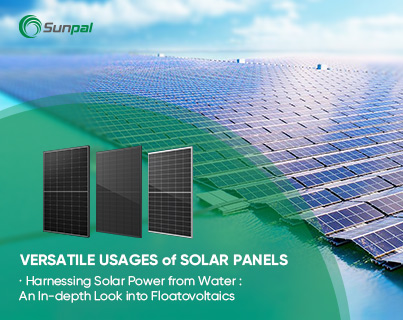
As someone who is deeply passionate about sustainable and renewable energy sources, I found myself irresistibly drawn to the intriguing concept of floatovoltaics. Also known as floating solar panels, floatovoltaics represent a novel and unique method of harnessing solar power – by positioning these solar panels on top of bodies of water. Not only do these installations present a visually captivating spectacle, but they also bring along a host of benefits, making them a pivotal player in the landscape of renewable energy.
Demystifying the Science Behind Floatovoltaics:
To fully comprehend and appreciate the wonders of floatovoltaics, it's crucial to delve into the mechanics of how they operate. Solar panels positioned on water work in much the same way as their traditional counterparts, but with a few distinctive variations. Instead of being mounted on rooftops or on the ground, these panels are engineered to float on water bodies, including lakes, reservoirs, and potentially even the vast expanse of the ocean.
The technology enabling floatovoltaics involves specially crafted buoyant structures that not only keep the solar panels afloat but also provide stability. These structures are typically constructed from materials that are robust, capable of withstanding all types of weather, and resilient in the face of the tough conditions typically found in water environments. By harnessing the sun's power, the panels transform sunlight into electricity using photovoltaic cells, in a process mirroring that of their land-based equivalents.
Exploring the Multitude of Benefits Offered by Floatovoltaics:
Floatovoltaics offer a significant array of environmental benefits. Primarily, by utilizing water bodies for solar panel installations, we can efficiently make use of space that would otherwise remain unused. This approach allows us to maximize the potential of solar energy generation, all without occupying precious land resources. In addition, floating solar panels can aid in reducing evaporation from water bodies, thereby helping to conserve water and mitigate the impact of drought in certain regions. Moreover, the practice of placing
solar panels on water bodies can help curtail algae growth and maintain water quality by providing shade and limiting the penetration of sunlight.
From an economic standpoint, floatovoltaics also offer numerous advantages. The cooling effect of the water directly beneath the panels can enhance their overall efficiency, leading to improved electricity generation. Additionally, the close proximity to water bodies can make the maintenance and cleaning of these solar panels easier and more cost-effective. Moreover, these installations can potentially generate revenue by utilizing water surfaces that would otherwise remain unproductive.
Examining Real-world Applications of Floatovoltaics:
Floatovoltaics have already left a significant imprint in various corners of the globe. A notable example of this can be seen in the Yamakura Dam in Japan, where a massive floating solar farm was erected, capable of generating enough energy to power thousands of households. Similarly, the Far Niente Winery in California has embraced the potential of floatovoltaics, utilizing the surface area of their irrigation pond to generate clean energy for their winemaking operations.
The potential for future applications of floatovoltaics is vast and exciting. This concept can be adapted for use in off-grid locations, where access to electricity is limited or nonexistent. Remote islands and coastal regions stand to greatly benefit from floating solar panels, as they provide an opportunity to tap into the abundant sunlight and reduce reliance on costly diesel generators. Furthermore, the integration of floatovoltaics with existing hydropower infrastructure can create hybrid systems capable of generating renewable energy around the clock.
Looking Towards the Future of Floatovoltaics:
There are several thrilling advancements in floatovoltaic technology on the horizon. Researchers are currently exploring innovative materials and designs to enhance the efficiency and longevity of floating solar panels. For instance, the use of lightweight and flexible solar modules could lead to cost reductions and improve adaptability to varying water environments. Additionally, integrating energy storage systems with floatovoltaics could help overcome the intermittent nature of solar power, ensuring a steady and reliable supply of energy.
Such advancements in floatovoltaic technology have the potential to bring about a revolution in the solar industry. By enhancing the efficiency and scalability of floating solar panel installations, we can hasten the transition towards a future dominated by renewable energy. The widespread adoption of floatovoltaics can play a significant role in reducing greenhouse gas emissions and combating the looming threat of climate change.
Concluding Thoughts:
In conclusion, floatovoltaics represent a major breakthrough in the realm of renewable energy. With their unique capability to harness solar power from water bodies, they offer a host of benefits for both the environment and the economy. The real-world applications of floatovoltaics have already demonstrated their potential, and with the continuous advancements in technology, their future appears bright and promising. By embracing this innovative approach to solar energy generation, we can pave the way towards a future that is not just sustainable but also significantly greener.
